It was definitely a very high-level game as anticipated between Man City and Bayern, the strongest two teams in the world right now according to FiveThirtyEight. Eventually, the score line was mostly decided by individual mistakes but there were many things to talk about… twitter.com/i/web/status/1…
Tuchel used 4-2-3-1 to perfectly get the shape with Man City’s on-ball structure. City’s narrow 3-2 build-up was matched with a narrow 3-1, and Goretzka and Kimmich controlling the central channels, 2 CBs on Haaland, FBs on wingers. 

The narrow tip pushed City to play wider, when the wide CB receives the ball, the ball side DM stuck on City’s AM, and opposite DM came to the center of the pitch. This left the only numerical advantage for City at the very far corner from the ball carrier. City CBs tried finding… twitter.com/i/web/status/1… 



Bayern set their pressing traps when the wide center back passed to the even wider option. Bayern’s best chance in the first half came from a turnover with this press. 


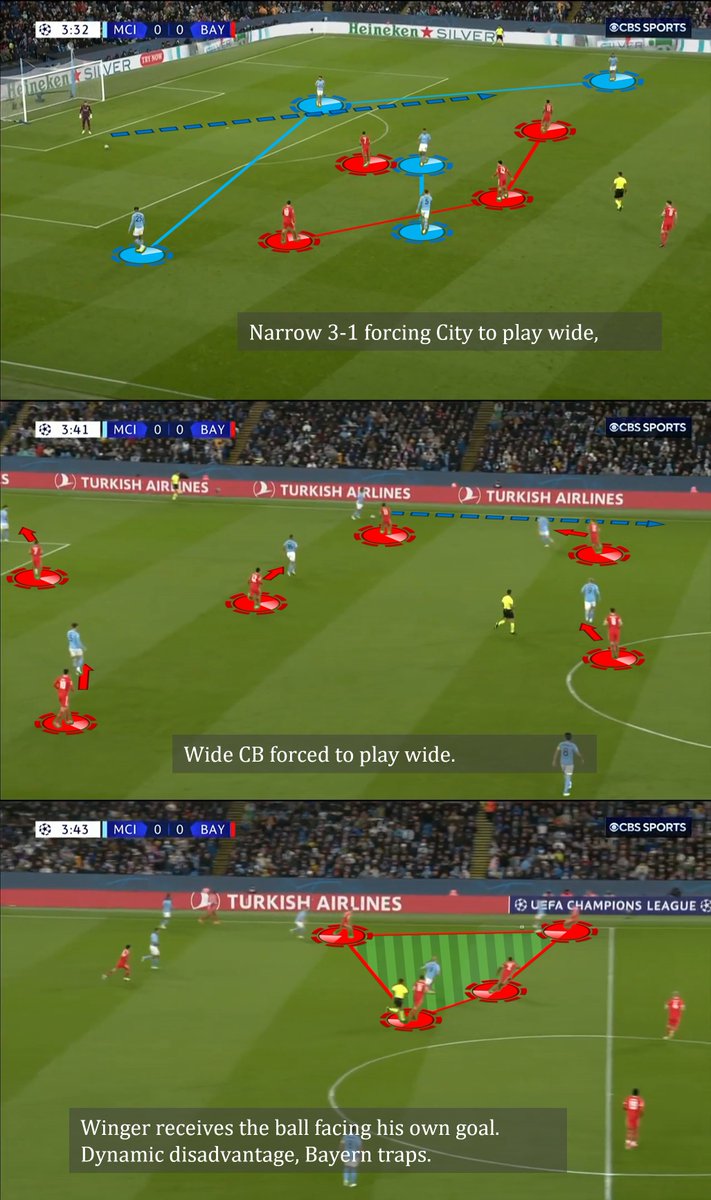


When City could break the press and push Bayern to low block, Bayern tried to continue using the same structure. 

At one of those times when Bayern tried to settle at low block, Gnabry couldn’t understand that Musiala was thinking they switched and left the zone open for Rodri. It was a situation if Rodri hadn’t hung it to the far corner with his opposite foot, we wouldn’t be talking about,… twitter.com/i/web/status/1… 

Until the goal, Bayern also tried using offensive transitions effectively. City leaves 5 players for rest defense, with narrow structure, they close the central channels in defensive transitions, however, wider corridors stay open. When Bayern wins the ball at advantageous… twitter.com/i/web/status/1… 



Now, let’s look at City’s out-of-possession structure and Bayern’s build-up. Guardiola started the game with an asymmetric 4-4-2 structure against Bayern’s 4-2 build-up. Grealish stayed between Upa and Pavard while Bernardo played closer to Davies. This was a bit different than… twitter.com/i/web/status/1… 
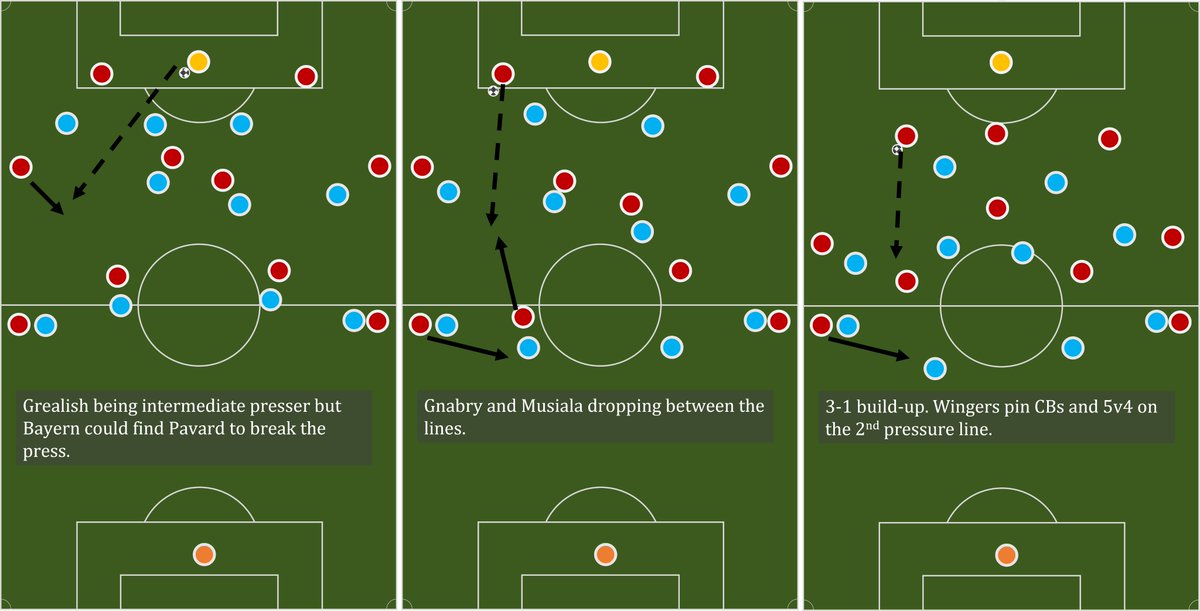
This made the 1st line of pressure to jump on CBs and losing their coverage to passing lanes to central players. As they lost central players behind them, Gundo and Rodri came closer to them, and Musiala and Gnabry who constantly dropped deep between 2nd and 3rdlines of pressure… twitter.com/i/web/status/1… 




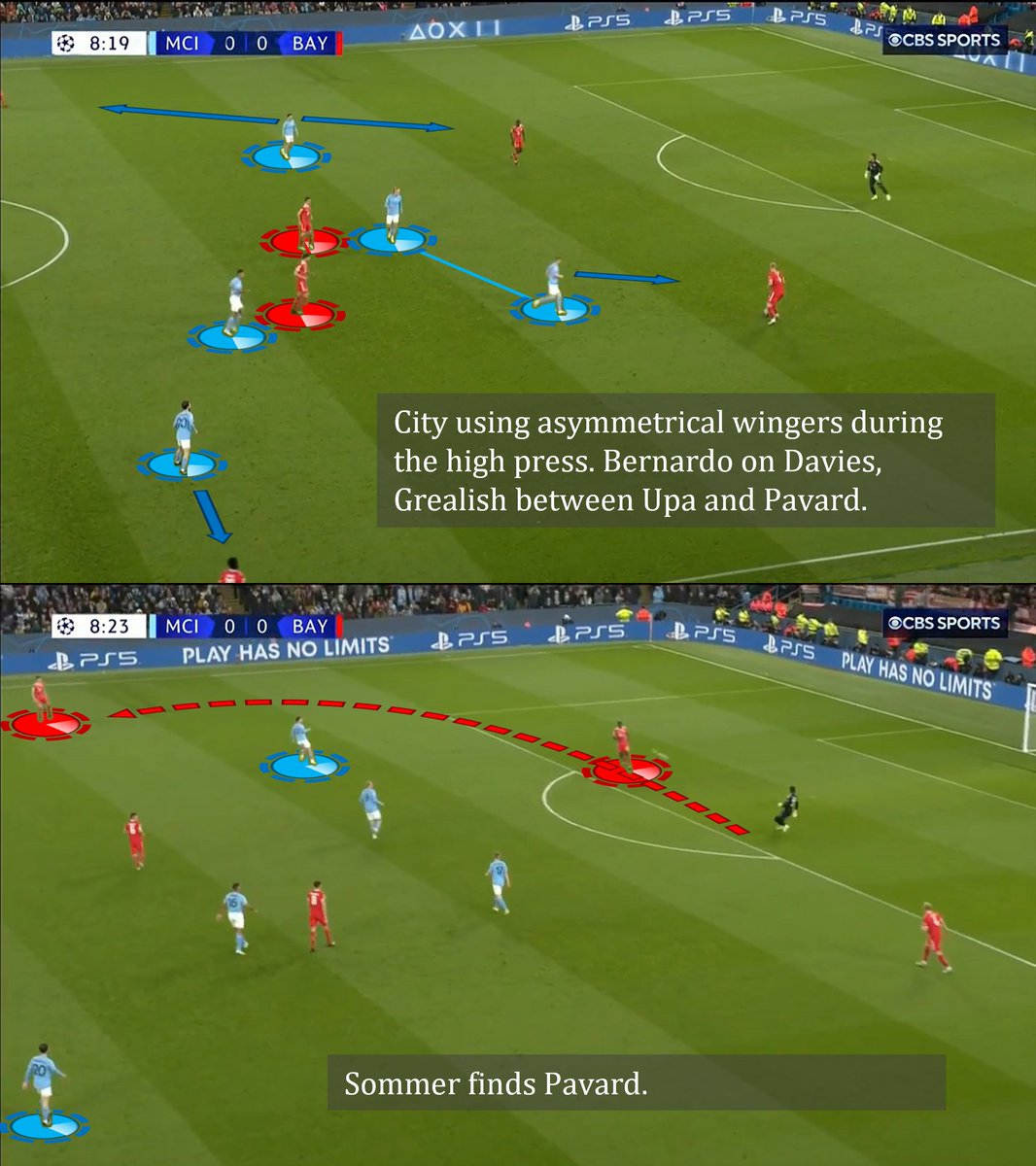

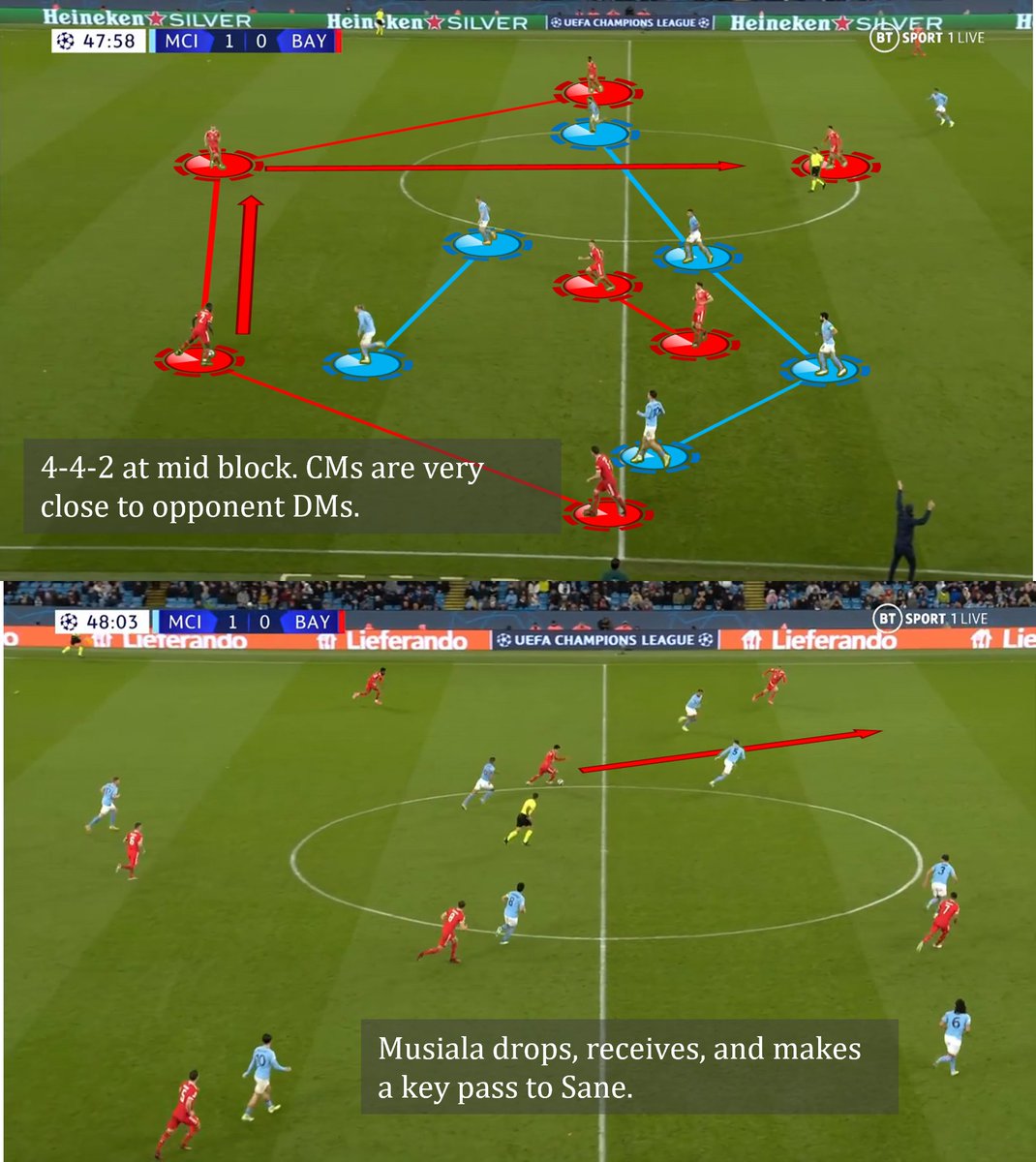
When City’s first line stopped jumping, this time one of Bayern’s DM started dropping between CBs and Bayern started to form a line of 5 over City’s 2nd line of pressure consisting of 4 players. 
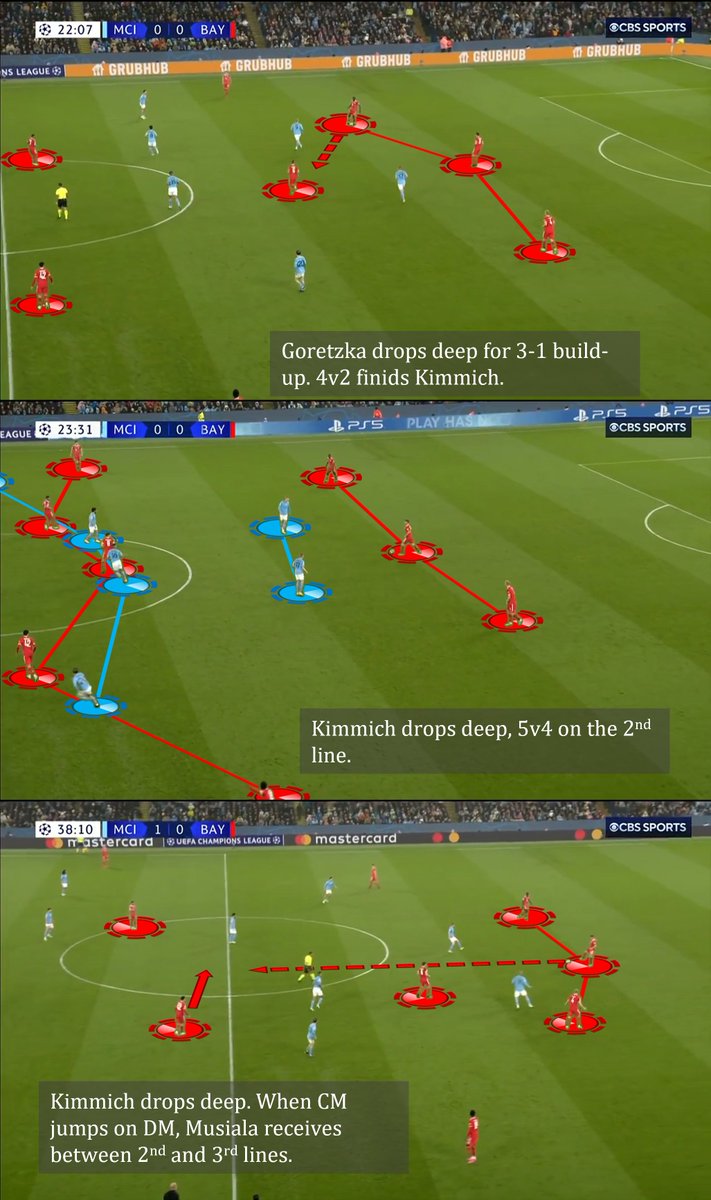
Around 60th minute, Guardiola turned back to the pressing structure he has been using recently. I have to say that on paper this pressing structure looks much more dangerous and while having the score advantage switching this structure requires a lot of courage, but it was… twitter.com/i/web/status/1… 

The high press turned out to be very effective, forced Bayern players to make mistakes. Mistakes brought more mistakes, first 2ndgoal came, and then Bayern players completely lost their concentration and control. After that moment, Bayern could’ve conceded more than one goal. 





Eventually two simple mistakes helped City to get a big advantage before the 2nd leg. Tuchel’s game plan was really good and Bayern players did a good job applying it at first 30 mins of the game. However, City players showed great concentration and devotion, they mentally beat… twitter.com/i/web/status/1…
Screenshots were edited with Once Video Analyser PRO - @11OnceSport #OncePRO
• • •
Missing some Tweet in this thread? You can try to
force a refresh

 Read on Twitter
Read on Twitter









